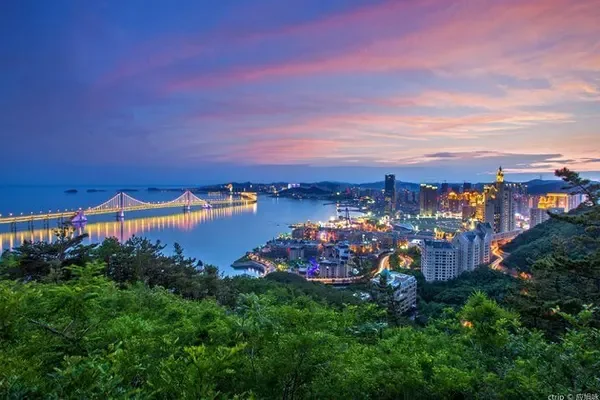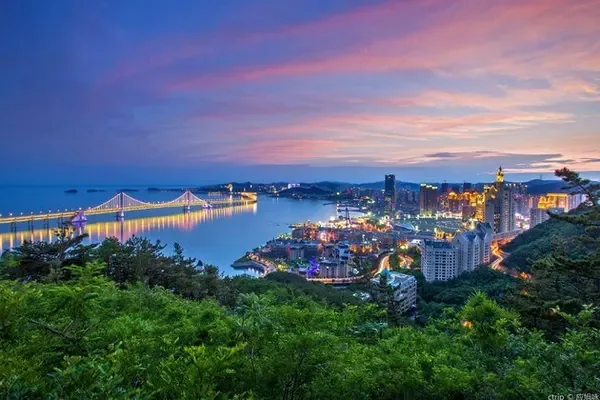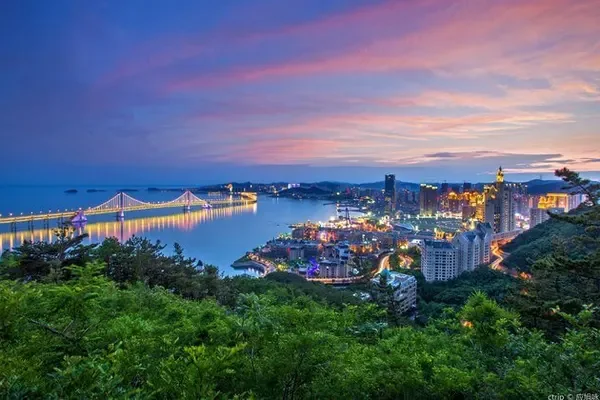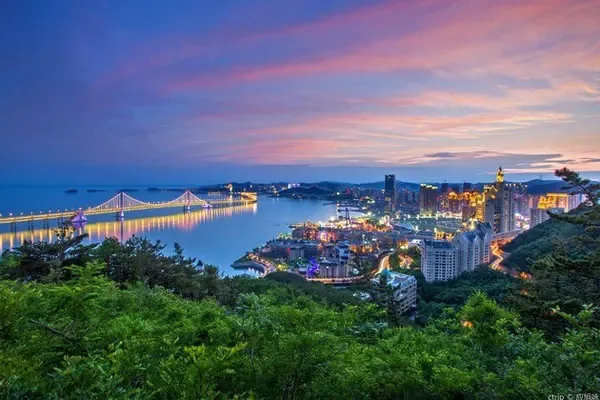June 17, 2021, the third day of the itinerary, was originally scheduled to cross the famous Duku Highway today.
The Duku Highway starts from Dushanzi District of Karamay City in the north, runs through the north and south of the Tianshan Mountains, and connects to Kuqa City in Aksu Prefecture in the south, with a total length of 561 kilometers. Because more than half of its area spans high mountains, crosses deep river valleys, and connects many minority-inhabited areas, it was selected as "a landscape avenue running through the backbone of Tianshan Mountain" by "China National Geography". Duku Highway has a special terrain, with many sharp bends and steep slopes. There are more than 280 kilometers of road sections above 2,000 meters above sea level. Due to natural factors such as snowfall and icing in winter, it is only open for five months a year, from the end of September to May of the following year Winter traffic restrictions will be implemented for up to 7 months.

But the news I was looking forward to today is that there is a landslide and the Duku Highway is closed. What a great pity! I borrowed two photos of the beautiful scenery of the Duku Highway from the Internet.

The scenery along the Duku Highway is extremely beautiful. A few days later, I walked the middle section of the Duku Highway, which made me regret a little.

The driver decided to take the S101 War Preparation Road instead, saying that the scenery is not inferior to the Duku Highway. Highway S101 is a Tianshan National Defense Highway built for war preparation in the 1960s. From Urumqi to Kursaal on the Duku Highway, the original road condition was poor, but the scenery is excellent. It is known as the Xiaoduku Highway and has become a road. It is a very popular route for photography, exploration, hiking, painting and other people.

Wugongtai service area is located at the intersection of Wukui Expressway and Huke Highway in Hutubi County, Changji. It is one of the five pairs of Internet celebrity scenic service areas created by Xinjiang. It strives for a more comfortable environment, more commerce, and more satisfying consumption. , making it a well-known and attractive place to stop in the country.

I immediately fell in love with Xinjiang's baked naan, which was always kept in the car during the ten-day journey, and often became an indispensable item for our lunch.
Red Lotus Mountain
After getting off the expressway, the road at the beginning is not bad, the asphalt road, although not very wide. Walking on it became a gravel road, and it was bumpy and wobbly, very uncomfortable. The driver called it "bad road". Although the road is not at first glance, the scenery is really good. After driving for a while, there are mainly red mountains mixed with other colors on the side of the road, resembling the colorful Danxia Mountain in Zhangye, Gansu, which is eye-catching.

Ask the driver to stop for a few minutes and get out to take pictures. Although the car stopped, the driver didn't take it seriously, thinking there was nothing to see here. I didn't understand it at the time, but as the itinerary gradually unfolded, I finally understood that Xinjiang's beautiful scenery is blooming everywhere, and driving all the way can be found everywhere. The scenery in front of me is purely ordinary in Xinjiang, and it is really nothing.

Honglianshan Guanyin Temple, also known as Hongshan Temple, is one of the famous birthplaces of Han Buddhism in Northwest China. It is located in Hutubi County, Xinjiang, at the south corner of Dafeng Town. It was first built in the 20th year of Guangxu in the Qing Dynasty (1894), destroyed by war in the 22nd year of the Republic of China (1933), and almost completely destroyed by the 35th year of the Republic of China (1946). After the founding of New China, the local Han herdsmen who believed in Chinese Buddhism rebuilt the Hongshan Temple, which took about three years to complete and was re-expanded in 2012.





The color of the mountain here is not so bright, but the condition of the road surface can be seen at a glance.


If you don't drive by yourself, you are very insensitive to the driving route, let alone a temporarily changed route. When I wrote this travel note, I realized that Honglian Mountain is not on the S101 road, but on the X146 road, which is the red 2 position in the picture below, and the green line vertically up and down is X146 road. Turn left before walking on S101 highway.
Red 1 is the Wugongtai service area of Lianhuo Expressway, and red 3 is the Kangjia Shimen mural. The whole green line is from Urumqi Hotel to Kangjia Shimenzi Rock Painting.

Baili Danxia Scenic Area
Baili Danxia Gallery is located near the 117th kilometer of S101 highway.

At 12:07, we are already walking on Highway 101. The asphalt road is very flat, with clear markings, and the road looks like it has been newly repaired. Surrounded by undulating peaks and ridges, green everywhere, the scenery is picturesque.

The name here is - Xinjiang Tianshan Baili Danxia Geological Park. The color, shape, and texture of the mountain here are much more beautiful than the Honglian Mountain I have seen before. The two are not on the same level at all. No wonder the driver looked down on the Red Lotus Mountain when parking there.


Here is the most spectacular and magical Chibi Danxia "Baili Gallery" in the Jurassic era of the Tianshan Mountains. Skyscrapers and more mountains are like giant sculptures with strange shapes, showing their charm in different postures.









There is a viewing platform built a little farther away, and several tourists are taking pictures.

A travel note wrote: In the south of Changji City at the northern foot of Tianshan Mountain, there is a provincial highway S101, which is called "Tianshan Geographical Scenery Corridor". There is a viewing platform in Queergou at 99 kilometers of this road section, Jiangshan Duojiao viewing platform at 105 kilometers, and Jinxiu Mountain River at 116 kilometers.






Viewing platform name: Xinjiang Tianshan Danxia Geological Park - Jinxiu Heshan.










The starting point of the S101 kilometer is at the fork of the 216 National Highway Xishan Farm and Ranch, which is more than 20 kilometers south of Urumqi City, and the end point is at the mountain pass of the Duku Highway in Bayingou, Dushanzi. The total length is 308 kilometers, and it is basically a gravel road. Build an asphalt road.

Kangjia Shimenzi Rock Paintings
Leave the viewing platform and continue westward along Highway 101. After walking for about a few kilometers, you will find the Kangjia Shimenzi rock painting scenic spot. The sign of the tourist service center is quite formal, and the environment around the house is a bit messy. Money to sell tickets, there is not even a formal gate.

After passing the visitor center, continue to drive forward along the road. The scenery here is the same as what you saw at the viewing platform before, but it feels a step deeper. Just now, you can see the colorful Danxia from a distance, but now you are in close contact.

It is said that at the end of the Qing Dynasty, a farmer surnamed Kang came to take refuge and live in this wilderness where wild animals were infested. Like Tiangong, it has the name of "Tianshan Kangjia Shimenzi".

That is, a distance of 1 or 2 kilometers. After turning a few turns, a tall and majestic mountain appears in front of you. There are ancient petroglyphs carved on the rock wall on the mountainside.

Tianshan Kangjia Shimenzi rock murals are located in the southwestern mountainous area of Hutubi County. The rock murals are carved on the rock wall on the south side of a 200-meter-high Danxia landform in the late Jurassic period. There are more than 300 carvings of different sizes. , characters and animals of various shapes.








Kangjia Shimenzi petroglyphs are rare reproductive worship petroglyphs in China and in the world. At the bottom of the mountain, on the rock surface within a range of about 120 square meters, there are engraved statues with full body and demeanor.



